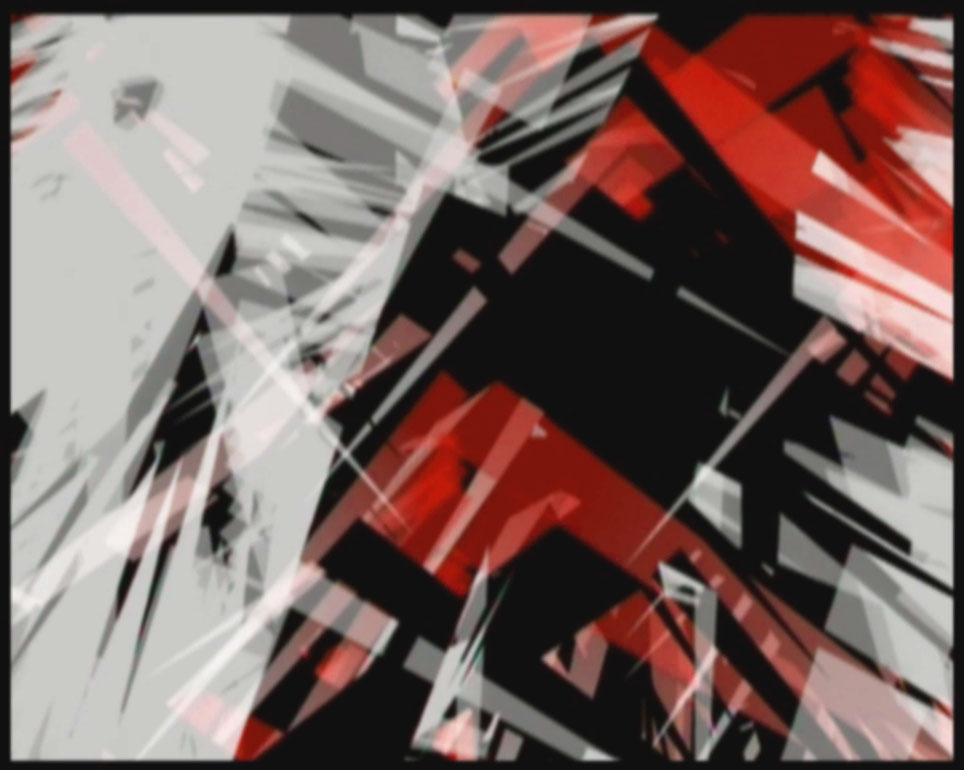VS-process
VS-Process by lia is an impressive portrayal of how picture and sound can drive each other. This work employed as its raw material visual and acoustic elements that, after being coded by lia, were processed further by her counterpart (sound: Bizz Circuits) on the acoustic level. The result then underwent additional visual development work. The exchange of computer files and processing of the information they contain occupies the foreground, and the final product illustrates this creative process. VS-Process therefore goes beyond visual representation of a musical idea or setting a visual representation to music. On the contrary this work was created, as indicated by its title, through opposition.
At the same time the initial images resemble the soundtrack of a film strip or a computer program´s visual translation of sound waves. At first geometric shapes move up and down the picture, and after a while they begin to overlap more and more. The individual visual elements are remixed?arrows and triangles are drawn out and then, leaving their straight lines of movement, spread across the picture in clusters. Black and white is complemented with some red.
What takes place on the sound level is nearly the reverse: At first several layers of sound are superimposed, and after a while individual layers become identifiable before condensing at the conclusion. When the files are exchanged, not only sound and picture exercise a mutual influence, both levels also illustrate what can be seen in the picture as a whole at the same time, specifically a constant reordering of the individual elements.
(Corinna Reicher)
VS-Process (texte français)
Les premières images font penser à la piste son optique d'une pellicule cinématographique ou à la représentation visuelle d'ondes sonores par un logiciel informatique. Des formes géométriques traversent d'abord le champ en des mouvements de montée et descente verticaux. Progressivement, les éléments optiques se mettent à s'amonceler. Les unités visuelles sont redistribuées pics ou triangles sont étirés en longueur avant d'abandonner les lignes droites pour s'étaler en grappes sur toute la surface de l'image. Au noir & blanc s'ajoute la couleur rouge.
L'évolution de la bande son est pratiquement contraire : au début, plusieurs couches sonores se superposent. Petit à petit, on distingue les différentes couches qui, vers la fin, recommencent à se condenser. Lors de l'échange des fichiers, image et son ne se contentent pas de s'influencer mutuellement, mais les deux plans illustrent chacun ce que l'impression d'ensemble rend perceptible, à savoir la réorganisation perpétuelle des éléments distincts. (Corinna Reicher)
Traduction: Françoise Guiguet
VS-process
2005
Austria
5 min

